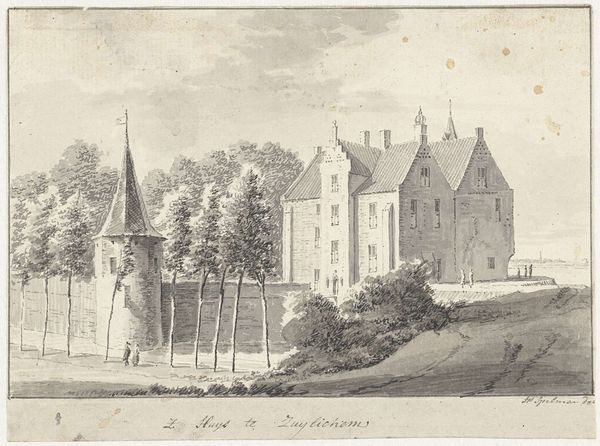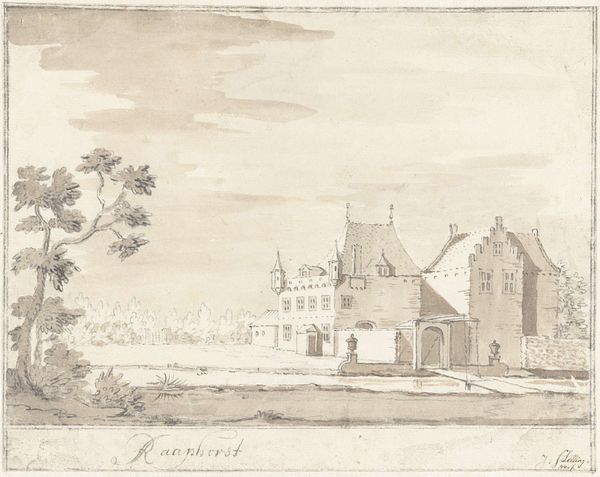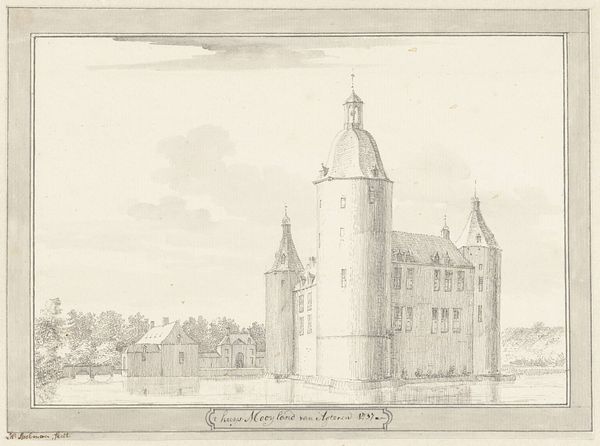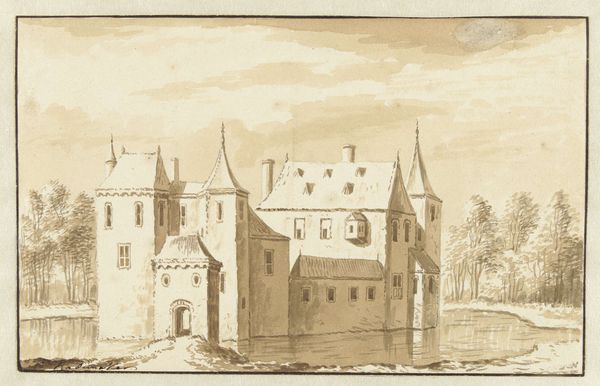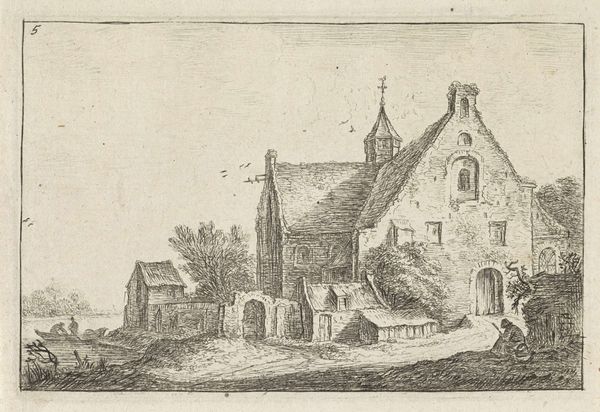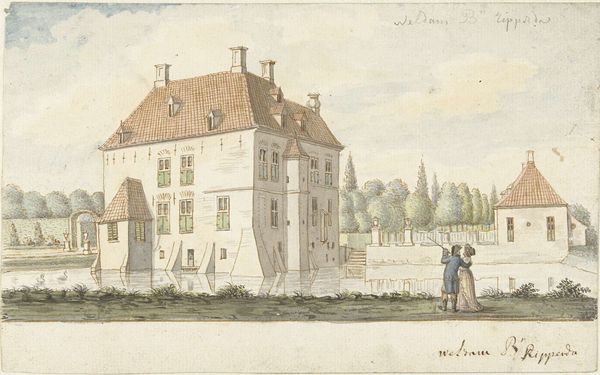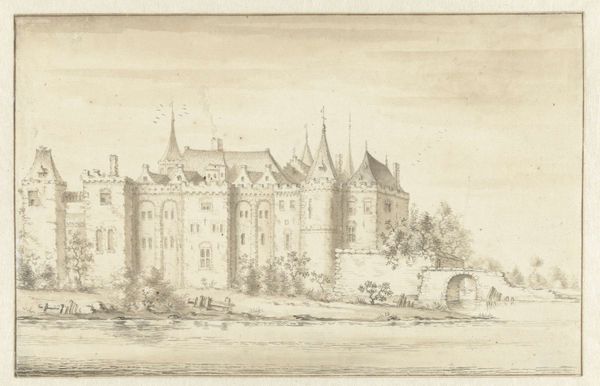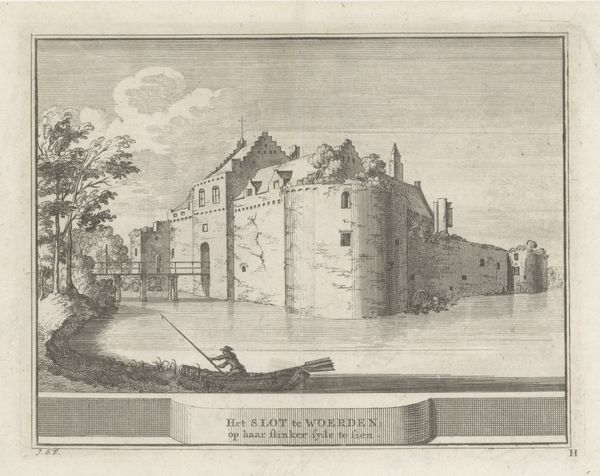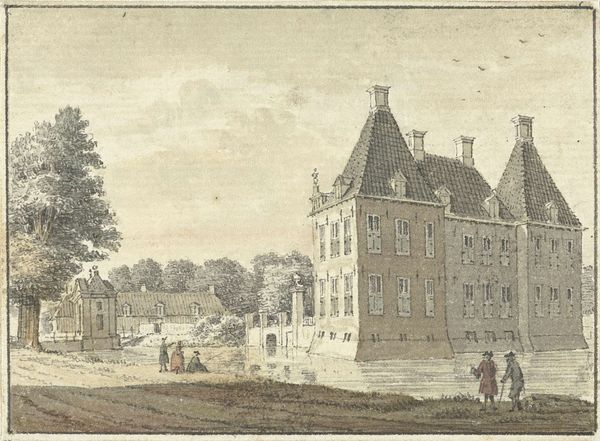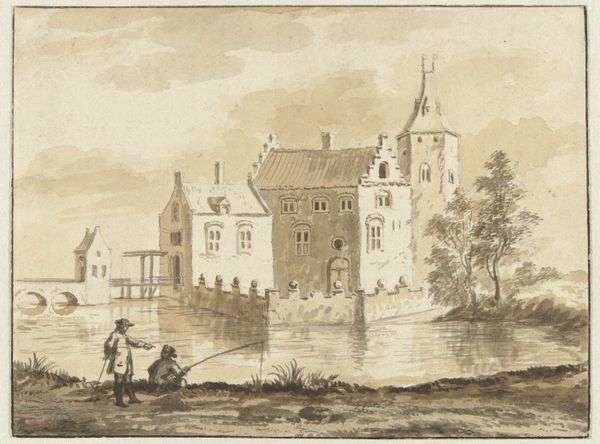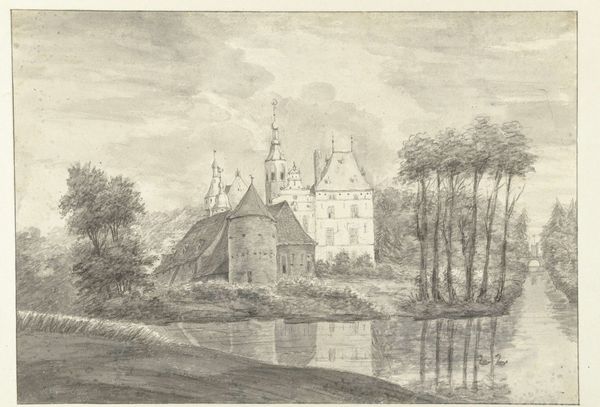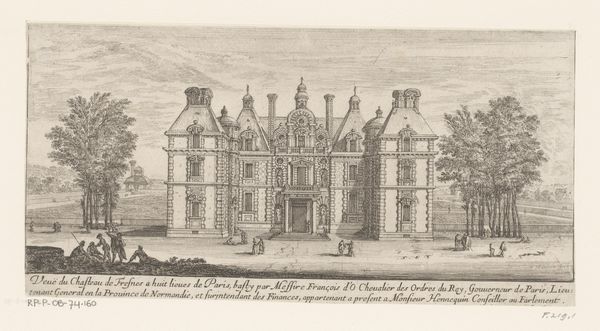
drawing, etching, paper, ink
#
drawing
#
dutch-golden-age
#
etching
#
landscape
#
etching
#
paper
#
ink
#
cityscape
Dimensions: height 158 mm, width 197 mm
Copyright: Rijks Museum: Open Domain
Editor: This drawing, "Kasteel Nieudoorn (?) bij Alkmaar" by Jacobus Stellingwerff, was created sometime between 1670 and 1736. It’s rendered in ink and etching, with a rather simple color palette. What strikes me is how still and isolated the castle seems. What do you see in this piece? Curator: Indeed, it appears tranquil, but perhaps deceptive. Castles, especially those surrounded by water, often symbolize protection, security, and even power. But think about what symbols mean across time and contexts. Water, in particular, can represent purification, or a boundary between worlds. Could the artist be subtly suggesting a vulnerability, a hidden tension beneath the surface of serenity? Editor: That's interesting. So, even something as simple as a moat can hold symbolic weight? Curator: Absolutely! Look at the details – the somewhat rudimentary rendering of the architectural features, the bare trees. They aren't just descriptive; they contribute to a narrative. What memories might the symbols of home and defense invoke for viewers then versus now? Is there a longing for simpler times, a hint of unease about encroaching modernity even then? Editor: I never would have considered those nuances. So it is not just an image of a place but a storehouse of possible meanings for the viewer? Curator: Precisely! An image can resonate differently depending on cultural memory. Understanding the context opens layers of interpretation that simple observation alone can't provide. Now, I am seeing new things too. Thank you! Editor: I have a whole new appreciation for the power of symbols and cultural context now.
Comments
No comments
Be the first to comment and join the conversation on the ultimate creative platform.
